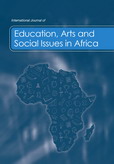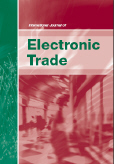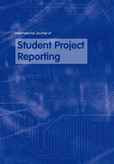Explore our journals
Browse journals by subject
Research picks
- Big data for big farmer
A review of digital technologies in the International Journal of Agricultural Resources, Governance and Ecology suggests that integration of mobile, 5G, wireless and the so-called metaverse could be a turning point in global agriculture. The use of this kind of technology is becoming essential in the face of population growth, climate change, and resource scarcity.
5G offers fast data transmission and almost ubiquitous connectivity for devices. In agricultural terms, this means smart sensors embedded in fields and greenhouses can transmit real-time data on soil conditions, crop health, and the weather to individual farmers or a central farming-control system. This allows more timely interventions to be undertaken when necessary, reducing waste and increasing precision in the use of water, fertilizers, and pesticides. All of which should cut costs, improve efficiency, and lead to better yields.
According to the review by Wenliang Tang and Muhammad Umair Assad of East China Jiaotong University, Junliang Xu of Jiangxi Telecommunications and Information Industry Co., Ltd., Jieming Liu of Jiangxi Zhongxin Yunnong Technology Co., Ltd. in Jiangxi, China, and Yifan Gao of Victoria University of Wellington, New Zealand, such capability extends beyond passive monitoring. 5G also enables the remote operation of advanced machinery, such as autonomous tractors and agricultural drones. In areas where labour shortages or extreme conditions make manual work difficult or dangerous, remote-controlled equipment offers a safer and often more efficient alternative. These changes could be particularly transformative in developing countries, where post-harvest losses are high and efficient resource use is critical.
In parallel, the metaverse, a digital environment in which users can interact in real-time through virtual or augmented realities, is finding unexpected applications in farming. Virtual reality (VR) can provide interactive training platforms for farmers, allowing them to practice new techniques or understand complex machinery without the need to travel or risk costly mistakes in the field. These tools are especially valuable in rural areas with limited access to conventional educational infrastructure.
A more advanced application of the metaverse in agriculture is the use of digital twins: virtual replicas of physical farms created through real-time data feeds. Such digital environments would allow farmers to simulate different agricultural scenarios, such as the introduction of a new crop or changes in irrigation strategies, before making real-world decisions. The virtual nature of the metaverse also opens up the possibility of new ways for farmers to collaborate. Farmers, researchers, and policymakers can convene in digital spaces regardless of physical distance, to discuss best practices and develop solutions to common problems together.
Tang, W., Assad, M.U., Gao, Y., Xu, J. and Liu, J. (2025) 'Enabling future agriculture: integration of 5G and Metaverse technologies for smart farming innovations', Int. J. Agricultural Resources, Governance and Ecology, Vol. 20, No. 5, pp.1–25.
DOI: 10.1504/IJARGE.2025.146099 - Entrepreneurship reimagined
Research in the International Journal of Entrepreneurship and Small Business suggests that entrepreneurship may be far more than a vehicle for economic growth. Two back-to-back studies show that entrepreneurial thinking, especially in how individuals perceive and respond to challenges, can also foster psychological resilience and enhance personal well-being. The findings suggest that we should redefine the value of entrepreneurship in society as it could have implications for education, policy, and development strategies.
One study, drawing on case analyses from entrepreneurs in Vietnam and Japan, introduces the idea of "partial constraint", which is a departure from conventional views that treat obstacles like supply shortages or policy hurdles as uniformly restrictive. Instead, the study dissects what constraints have an effect on entrepreneurs and which do not, and shows how they can selectively isolate and recombine different factors to open up new business solutions. This allows entrepreneurs not only to continue operating under pressure, but also to build a sense of agency, resilience. The study shows that resilience isn't a fixed personality trait but can be cultivated through problem-solving and resourcefulness.
The other study looks at the relationship between entrepreneurial cognition and subjective well-being. Traditionally, entrepreneurship has been linked to economic indicators: job creation, innovation, and contribution to gross domestic product. This latest research questions the assumption that well-being is merely a by-product of entrepreneurial success. Indeed, the findings suggest that "entrepreneurial thinking" itself, marked by traits such as optimism, creativity, perseverance, and comfort with uncertainty, may directly contribute to life satisfaction and happiness.
Entrepreneurs often face unpredictable and high-pressure environments, but those who think entrepreneurially interpret such challenges as opportunities rather than threats. This cognitive reframing appears to foster a sense of meaning and control, both central to psychological well-being.
Together, the two studies challenge prevailing assumptions in both economic and psychological domains. They argue for a new definition of entrepreneurial success, one that includes mental and emotional outcomes.
The work could have implications for policymakers, especially in countries facing high youth unemployment or systemic inequality. The findings suggest that promoting entrepreneurship could serve two purposes: economic empowerment and psychological resilience. Entrepreneurship could be strategically positioned not just as a livelihood option, but as a tool for strengthening mental health and community adaptability.
Nguyen, N.C., Matta, D., Hasnaoui, J.A., Lodorfos, G. and Matta, R. (2025) 'Dynamic resource analysis and the development of psychological resilience: an entrepreneurial perspective', Int. J. Entrepreneurship and Small Business, Vol. 55, No. 6, pp.1–19.
DOI: 10.1504/IJESB.2025.146150Nguyen, N.C., Hasnaoui, J.A., Lodorfos, G., Matta, D. and Laine, I. (2025) 'Resilience, optimism, and entrepreneurial well-being: a review and research agenda', Int. J. Entrepreneurship and Small Business, Vol. 55, No. 6, pp.20–40.
DOI: 10.1504/IJESB.2025.146149 - Procuring improved pronunciation pronouncements
A new system that improves on the detection of pronunciation errors among non-native speakers could improve English language learning. The technology, discussed in the International Journal of Computing Science and Mathematics, uses speech recognition tools and statistical modelling. It could offer English learners feedback and track their progress, particularly in regions where there is limited access to face-to-face human instruction.
Wenna Dou of the University of Civil Engineering and Architecture in Beijing, China, has focused on Chinese learners of English, a group that often faces challenges in mastering the nuances of English pronunciation due to phonetic and prosodic differences between the two languages.
At the core of this system lies the use of Mel Frequency Cepstral Coefficients (MFCC), a technique commonly employed in speech analysis that simulates how the human ear processes sound. By converting speech into digital signals and emphasizing features such as pitch and frequency, the method captures intonation points. These are key moments in spoken language where pronunciation is most susceptible to error.
To assess these intonation points, Dou used a statistical framework known as the Hidden Markov Model (HMM). HMMs are particularly effective in analysing time-dependent data, such as speech, because they model changing systems based on a series of probabilities. By using a segmentation process that breaks speech into smaller units, Dou has improved the system so that it can cope with longer sections of speech and maintain accuracy without being stymied by complexity.
Dou has also introduced a "degree component signal detection method." This enhancement refines the system's ability to identify spectral features, the variations in sound frequency, that often indicate mispronunciation. These features are then compared to a database of standard English pronunciations. The resulting system can quickly flag pronunciation errors with more than 97% accuracy, according to Dou's tests.
As English continues to serve as a global medium for education, business, and international collaboration, tools that promote clearer speech and mutual intelligibility are in increasing demand. Automated feedback mechanisms, especially those with real-time capability, offer learners immediate and objective insights into their spoken language skills and lead them towards improving.
Dou, W. (2025) 'A method for capturing English oral pronunciation errors based on speech recognition', Int. J. Computing Science and Mathematics, Vol. 21, No. 1, pp.32–47.
DOI: 10.1504/IJCSM.2025.146081 - Inner drive sparks success for Indian business women
Inner drive plays a more decisive role than external conditions in shaping the intention of Indian women to become entrepreneurs, according to research in the International Journal of Business Innovation and Research. The findings could have implications for policymakers in encouraging business development especially as women-owned businesses have the potential to generate employment, reduce poverty, and serve as nodes of empowerment in both urban and rural settings.
Bijay Prasad Kushwaha of the Vellore Institute of Technology in Vellore, Raj Kumar Singh of Graphic Era Hill University and Vikas Tyagi of Himgiri Zee University in Dehradun, India, and Bhagwati Prasad Chaudhary of Lumbini Banijya Campus in Butwal, Nepal, surveyed more than 400 women who were either in the process of launching or planning to launch their own business ventures. The data obtained offers new insights into the underlying motivations and what hinders entrepreneurial ambition among women in one of India's most dynamic urban economies, the Chandigarh Tri-city region of Chandigarh, Panchkula, and Mohali, in northern India.
Women make up half of India's population but are significantly underrepresented in the business world. The team wanted to know why and so divided the various motivational factors into two broad categories. Thre first, internal factors that encompass personal attributes, such as self-confidence, motivation, and resilience. The second, external factors refer to the broader environment, including the availability of financial capital, support from institutions, and prevailing market conditions.
They found that internal factors, especially those related to a woman's psychological disposition and social context, are more influential than the external factors. This suggests that personal belief in one's abilities, coupled with encouragement from family and community, serves as a stronger catalyst for entrepreneurship than the presence of supportive infrastructure alone.
Perhaps counterintuitively, not only did external factors have little real impact, the statistically significant impact they did have was exerted as a negative influence on entrepreneurial intent. Bureaucratic red tape, lack of institutional clarity, or gender-based discrimination, for instance, were more likely to discourage women from starting businesses, even when they have the motivation and support to do so.
Kushwaha, B.P., Singh, R.K., Tyagi, V. and Chaudhary, B.P. (2025) 'How to empower women? Modelling the factors increasing women's entrepreneurial intention', Int. J. Business Innovation and Research, Vol. 37, No. 1, pp.108–129.
DOI: 10.1504/IJBIR.2025.146040 - Gas is the word
In a sector as complex and capital-intensive as oil and gas, the decision-making process surrounding supplier selection is pivotal to operational success and long-term competitiveness. Research from Oman's oil and gas sector published in the International Journal of Services and Operations Management (IJSOM) highlights the need for more structured, data-driven approaches to supplier evaluation. This research explores the application of advanced decision-making techniques to improve transparency, reduce risk, and enhance operational efficiency within the industry.
At the core of this research is the application of multi-criteria decision-making (MCDM) methods. MCDM methods are analytical tools that can be used to evaluate options based on different, often conflicting, criteria. MCDM is particularly important in this industry where decision-makers must balance factors such as cost, safety, regulatory compliance, past performance, and environmental impact. Conventional supplier-selection methods often rely too heavily on subjective judgement, which can lead to the wrong decisions being made.
The IJSOM findings suggest that these methods can create a nuanced framework for supplier selection. In the case study, the approach shows itself to be invaluable in cases where specific contract requirements demand a more tailored, context-sensitive evaluation of suppliers.
The researchers suggest that supplier selection should no longer be driven by price alone. The volatile nature of the oil and gas industry, shaped, as ever, by geopolitical tensions, fluctuating markets, and evolving environmental regulations, requires a broader focus. Supplier experience, commitment to health, safety, and environmental standards, and the ability to manage operational risks have become more important than initial pricing, particularly in contracts that involve sensitive operations.
The research shows that an MCDM-based framework might be beneficial not only to individual companies, but also to national regulatory bodies and tendering authorities. By embedding these methods into procurement practices, the industry could achieve greater operational resilience, better align with sustainability objectives, and strengthen its contribution to the economy.
Kamran, M.A., Afsharfar, S., Al Fori, S., Babazadeh, R. and Al Balushi, M. (2025) 'Supplier selection in oil and gas industry', Int. J. Services and Operations Management, Vol. 50, No. 5, pp.1–27.
DOI: 10.1504/IJSOM.2025.145843 - Power tool cuts through investor decisions
A tool to help make important choices in the financing of building energy upgrades is discussed in the International Journal of Decision Support Systems. The system offers the promise of clarifying this often murky process given the Europe's ageing buildings, and could improve necessary investment.
Ioanna Andreoulaki, Aikaterini Papapostolou, Charikleia Karakosta, and Vangelis Marinakis of the National Technical University of Athens in Greece, used their home country as a case study, but their findings will be equally applicable throughout the European Union. Indeed, they demonstrate how a structured decision-making framework can better align private capital with the sustainability targets.
Buildings are responsible for about 40% of energy consumption and over a third of carbon emissions in the EU. They are thus a major focus of the bloc's climate and energy agenda. As such, the European Commission has launched initiatives such as the Energy Efficiency Directive and the Renovation Wave, aimed at accelerating the upgrade of inefficient buildings. Yet despite these policies, actual renovation rates have remained disappointingly low.
One of the main obstacles is the financial uncertainty surrounding investment in sustainable power options. Investors face a difficult task in evaluating which energy-saving measures offer the most compelling combination of cost-effectiveness, carbon reduction, and, of course, long-term financial returns. After all, they are not going to invest simply for the green credibility, but expect a profit. Conventional financial models often fall short of accounting for the full complexity of this kind of decision.
The researchers adapted multi-criteria decision analysis (MCDA) to the context of building renovations. MCDA is a structured framework that supports decision-making when multiple, sometimes conflicting, factors must be taken into account. The specific approach employed in this study is called TOPSIS—the Technique for Order of Preference by Similarity to Ideal Solution. It works by scoring and ranking alternatives according to how closely they resemble a hypothetical "ideal" option that performs best across the various criteria.
Applying this method, the researchers evaluated 48 real-world renovation projects in Greece, focusing on private office buildings in the Attica region. The projects included a diverse range of interventions, from installing energy-efficient lighting and solar panels to upgrading heating, ventilation, and air conditioning (HVAC) systems and adding smart automation for energy control.
The analysis showed a clear hierarchy in investor appeal. Heating system upgrades stood out as particularly attractive, combining relatively low upfront costs with substantial energy savings. Other high-ranking measures included efficient lighting and renewable energy integration. In contrast, building automation technologies were rated lower, largely due to higher perceived complexity and longer payback periods, even though they have great potential for long-term savings.
The results offer a roadmap for public policymakers seeking to tweak incentive schemes and encourage sustainability investment. This suggests that while market forces may naturally gravitate towards HVAC and lighting upgrades, more strategic policy support is needed to encourage investment in less immediately appealing, but important, technologies such as automation.
Andreoulaki, I., Papapostolou, A., Karakosta, C. and Marinakis, V. (2025) 'A decision-making approach based on the TOPSIS method for supporting energy efficiency financing in buildings', Int. J. Decision Support Systems, Vol. 5, No. 5, pp.1–36.
DOI: 10.1504/IJDSS.2025.145842 - I'm only human, after all
Where are the humans in human-centred design? That is the question researchers answer in their paper in the Journal of Design Research.
In an area increasingly defined by its responsiveness to human needs, a new piece of research from the University of Michigan suggests that the act of drawing a person into a design sketch can prompt a deeper and more sustained consideration of the human experience. The findings offer a quietly transformative approach to a long-standing challenge: how to ensure that design thinking remains rooted in the lives of the people it aims to serve. This is critical in the earliest, most abstract phases of idea generation.
Human-centred design, a methodology that emphasizes empathy with users and attention to their emotional, social, and physical experiences, is now common across many disciplines, from product development and architecture to public services. Yet despite this, it remains difficult to realize in practice. Designers, particularly when working independently or under tight constraints, often struggle to take the human angle into account. This later manifests itself as the end-product being disconnected from users.
The new research tackles this dilemma by introducing a subtle but purposeful intervention. In two empirical studies involving student designers, participants were first asked to generate design ideas as they normally would. In a second round, they were given one additional instruction: to include a visual representation of a person in every sketch they produced.
While the change might seem trivial, almost naïve and childlike, its impact was not. The researchers saw a noticeable shift in cognitive patterns as the student engineers in each group worked. Those that included people in their sketches began to discuss their ideas differently. They speculated more readily about how users would physically interact with a product, how the design might make someone feel, and what implications it might have for others beyond the immediate user. This is obviously a positive effect in terms of ensuring that the final design is connected to human reality rather than disconnected.
Murphy, L.R., Makhlouf, T., Daly, S.R. and Seifert, C.M. (2025) 'Where are the humans in human centred design? Intentionally representing people during idea generation deepens consideration of needs', J. Design Research, Vol. 22, No. 5, pp.1–26.
DOI: 10.1504/JDR.2025.145837 - Pores for thought when it come to carbon capture
A new life-cycle assessment comparing the production impacts of three materials used in carbon dioxide capture technology has highlighted the environmental trade-offs involved in using such materials. The research, published in the International Journal of Global Warming, analysed the emissions associated with manufacturing, a so-called "cradle-to-gate" analysis. The results offer new insights into whether the use of such materials can truly be sustainable in part of how we address climate change.
Namra Mir, Yusuf Bicer, Fadwa El-Mellouhi, Elumalai Palani, Satyanarayana Bonakala, and Abdulkarem I. Amhamed of Hamad Bin Khalifa University, Doha, Qatar, have looked at various porous materials, which can "adsorb" gases from the air. These include natural minerals known as zeolites and their synthetic counterparts, metal-organic frameworks (MOFs). Depending on the exact chemical structure of these materials, they can be produced to adsorb specific gases, such as the greenhouse gas carbon dioxide, in preference to others.
As global efforts to reach net-zero emissions are intensifying, so carbon dioxide capture technology continues to be of interest. It could be used to offset emissions from industrial and other sectors that would be very hard to decarbonize, such as cement production and transport.
The study focused on three porous materials with potential for carbon capture. Specifically, the team looked at TCM-14, referred to as MOF-1, and two hybrid zeolite-based materials, zeolite 13X with diethylenetriamine (MOF-2) and zeolite A with methanol (MOF-3). They then calculated the emissions associated with producing these materials for use in carbon capture technology.
Among the three, MOF-1 had the lowest environmental footprint at 3.5 kg carbon dioxide equivalent per kilogram of material. The two hybrid zeolite materials had significantly higher emission potential at around 14 kg of carbon dioxide each per kilogram manufactured. This suggests that despite its greater chemical complexity, MOF-1 may be the more sustainable option in terms of its initial environmental burden.
However, the team points out that despite this advantage, manufacturing MOF-1 is an energy-intensive process because it has to be carried out at a very high temperature. For the zeolite-based materials, the chemical modifiers used can lead to even worse manufacturing emissions, with one particular additive used to improve adsorption, leading to carbon dioxide emissions of well over 40 kilograms per kilogram of adsorbent material produced.
The work emphasises that we cannot evaluate a technology developed to combat climate change solely on its performance, we must take into account the energy and emissions costs as well as the resources costs of manufacturing and maintaining that technology.
Mir, N., Bicer, Y., El-Mellouhi, F., Palani, E., Bonakala, S. and Amhamed, A.I. (2025) 'Life cycle assessment of sustainable metal-organic frameworks and zeolites', Int. J. Global Warming, Vol. 36, No. 1, pp.23–33.
DOI: 10.1504/IJGW.2025.145674 - Step off the gas
New research has shed light on a critical obstacle facing efforts to reduce carbon emissions, the willingness of drivers to accept higher fuel costs. A pair of simultaneous surveys, designed to explore this issue, found that consumers' readiness to endure economic sacrifices depends heavily on their understanding of climate change's tangible effects. Details of the results and analysis can be found in the journal Interdisciplinary Environmental Review.
In the study, participants were divided into two groups. One, known as the "treatment group," was asked to read a short article outlining the destructive impacts of climate change across the USA. The other group, the "control group," received no such information. The contrast between responses from the two groups was stark. Those exposed to the information were significantly more willing to accept increased fuel prices in the interest of reducing carbon emissions, while those without that context expressed little willingness, if any, to do so.
The findings, from John McCollough of Lamar University in Beaumont, Texas, USA, highlight the importance of public awareness in environmental policymaking. Carbon emissions are described by economists as a "public bad," a term referring to harmful by-products of everyday activities. Burning fossil fuels for transport and the associated carbon emissions impose costs on society at large. To mitigate a "public bad", one widely used strategy is to raise the associated costs through taxation. In this instance, the logic is that by making carbon-intensive activities more expensive, individuals and businesses will be driven to change their behaviour. They might drive less or invest in cleaner vehicles, or even adopt alternative forms of transport.
The strategy is embodied in the concept of a carbon or fuel tax. Economists broadly regard such taxes as among the most efficient, cost-effective, and administratively simple means of reducing greenhouse gas emissions. The USA remains an outlier among developed economies. It has the lowest fuel taxes among member countries of the Organisation for Economic Co-operation and Development and ranks high in per capita carbon emissions.
The relationship between fuel taxation and emissions is well-documented. Countries that impose higher taxes on fuel consistently record lower per capita levels of carbon dioxide emissions. Yet despite its economic efficiency, raising fuel prices is politically contentious. Higher taxes would mean higher household expenses, potentially reshaping spending patterns and lifestyle choices. While some households might reduce driving, purchase fuel-efficient vehicles, or shift to public transit, but without increased understanding of why such changes are necessary, there will inevitably be pushback from the public.
The research suggest that designing effective climate policies is not enough. Governments need to communicate the reality of climate change and connect directly with people's experiences. The success of carbon pricing initiatives, and possibly of broader climate strategies, depends not only on sound economic reasoning but also on cultivating public trust and engagement.
McCollough, J. (2025) 'Environmental awareness and consumers' willingness to accept higher fuel prices to reduce carbon emissions', Interdisciplinary Environmental Review, Vol. 24, No. 2, pp.112–123.
DOI: 10.1504/IER.2025.145774 - Microplastic detection
A study in the Interdisciplinary Environmental Review has looked for the presence of microplastics in drinking water sources in Southern India. The work provides new evidence of the spread of plastic pollution and its increasing potential effect on human health. I. Ronald Win Roy and A. Stanley Raj of Loyola College in Chennai, India, analysed tap and tank water in Chennai, focusing on areas near the heavily polluted Cooum River and Great Salt Lake. They found microplastic particles in almost every sample tested.
Microplastics are defined as plastic fragments smaller than five millimetres. They are usually formed through the breakdown of larger pieces of plastic waste through exposure to sunlight, water, and friction. They have been detected in almost every ecosystem from the remote Arctic ice to the deepest parts of the ocean, which is of obvious broad environtmental concern. However, their presence in drinking water is a serious issue with a potentially even more direct effect on public health.
This is the first study of its kind in Southern India and comes at a time when global plastic production is of even more concern than ever before. In 1970, global production stood at 30 million tonnes, by 2020, plastic production had reached 380 million tonnes. Forecasts suggests that figure will have reached 600 million tonnes annually by 2050. As plastic use intensifies around the world, waste management systems, particularly in rapidly urbanizing regions, are struggling to keep pace. The result is that plastic debris is increasingly infiltrating both natural and the built environments.
The presence of microplastics in the environment and in drinking water is troubling in itself, but it is their potential to act as vectors for toxic substances that raises even more concern. Fat-soluble compounds can be absorbed on to or even into synthetic polymer particles. Such compounds might include persistent organic pollutants with potentially carcinogenic or endocrine-disrupting effects. Furthermore, microplastics might act as hosts for pathogenic microbes or transport toxic heavy metals.
Once ingested, any toxic payload released in the body might then have detrimental effects on health. Given that tests on blood, placental tissue, and even lung samples have already demonstrated the presence of microplastics in humans. Microplastic contamination is becoming a defining feature of the Anthropocene. The development of detection tools, as demonstrated in this study, is urgently needed so that we can more clearly understand the problem and hopefully devise solutions.
Roy, I.R.W. and Raj, A.S. (2025) 'Identifying microplastic contamination in drinking water: analysis and evaluation using spectroscopic methods', Interdisciplinary Environmental Review, Vol. 24, No. 2, pp.97–111.
DOI: 10.1504/IER.2025.145768
News
Prof. Antonio Formisano appointed as new Editor in Chief of International Journal of Rapid Manufacturing
Prof. Antonio Formisano from the University of Naples in Italy has been appointed to take over editorship of the International Journal of Rapid Manufacturing.
Eight Inderscience journals announced as open access-only titles
We are pleased to announce that the following titles
- International Journal of Business Excellence
- International Journal of Business Innovation and Research
- International Journal of Business Information Systems
- International Journal of Critical Infrastructures
- International Journal of Indian Culture and Business Management
- International Journal of Information and Coding Theory
- International Journal of Services and Operations Management
- International Journal of System of Systems Engineering
are now Open Access-only journals. All accepted articles submitted from 23 April 2025 onwards will be Open Access, and will require an article processing charge of US $1600.
Five inderscience journals announced as open access-only titles
We are pleased to announce that the following titles
- International Journal of Computational Complexity and Intelligent Algorithms
- International Journal of Electronic Finance
- International Journal of Electronic Security and Digital Forensics
- International Journal of Managerial and Financial Accounting
- International Journal of Modelling in Operations Management
are now Open Access-only journals. All accepted articles submitted from 17 April 2025 onwards will be Open Access, and will require an article processing charge of US $1600.
International Journal of Power and Energy Conversion is now an open access-only journal
We are pleased to announce that the International Journal of Power and Energy Conversion is now an Open Access-only journal. All accepted articles submitted from 18 March 2025 onwards will be Open Access, and will require an article processing charge of US $1600.
Prof. Varun Gupta appointed as new Editor in Chief of International Journal of Computer Aided Engineering and Technology
Prof. Varun Gupta from Gisma University of Applied Sciences's Multidisciplinary Research Centre for Innovations in SMEs in Germany has been appointed to take over editorship of the International Journal of Computer Aided Engineering and Technology.





